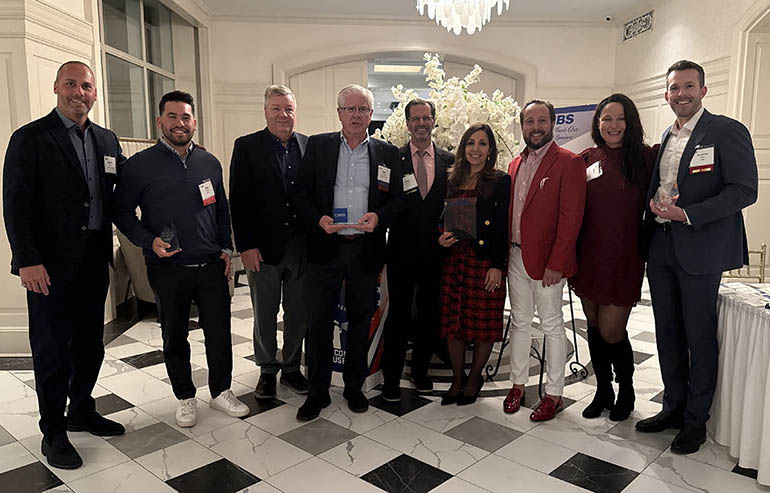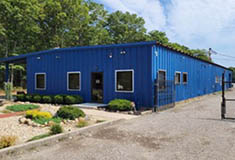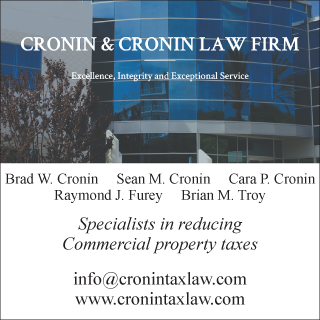News:
Long Island
Posted: December 28, 2007
Vapor intrusion: Legal issues for real estate development
Vapor intrusion of hazardous contamination is an urgent and expanding new environmental issue for real estate development. This article will discuss the most recent regulatory policies and enforcement trends, potential claims and the effect of vapor intrusion on due diligence for property acquisition.
Vapor Intrusion (VI) is a term describing the migration of vapors into a building from subsurface contaminated soil or groundwater. Evolving scientific awareness and measurement of potential human health risks from vapors from common contamination (such as dry cleaning and industrial solvents) have led federal and state regulators to now require additional assessment of VI at developing sites. Certain states, especially New York, are also "re-opening" environmental investigation of VI at past "closed" sites causing disruption, delays and, in some cases, a public relations nightmare. This is having a chilling effect on the voluntary remediation and redevelopment of contaminated sites.
By way of background, in November 2002 the Environmental Protection Agency issued Draft Guidance for Evaluating Vapor Intrusion to Indoor Air Pathway from Groundwater and Soils. This Guidance came under criticism for conservative assumptions. Thus, modifications are due in January 2008 that are expected to be more moderate. However, most enforcement of VI requirements occurs at the state level. Currently, six states have VI regulations (N.Y., N.J., Calif., Colorado, Delaware and Penn.) and 20 have guidance, which are constantly being updated. Thus, there is a lack of conformity in addressing the issue. For example, whereas the New Jersey Department of Environmental Protection is approaching the VI issue at sites on a case-by-case basis, the New York Department of Environmental Conservation has launched a systematic re-opening of the investigation of VI pathways at 430 heretofore legally "cleaned" sites.
The new VI regulatory requirements can increase development costs. Not only is an indoor air sample expensive, regulatory agencies often require a multitude of samples per site since the pathways and effect of VI is not often easily understood. Furthermore, because indoor air samples are best interpreted when conducted concurrent to related soil vapor samples and sub-slab sampling, this also escalates costs.
In addition to government enforcement, private claims for remediation of VI can be asserted under such state statutes as the N.J. Spill Act or more narrowly for petroleum contamination vapors under the New York Navigation Law. Claims for exposure to toxic vapors can come through worker's compensation claims. However, third party litigation and "toxic torts" will be dominated by state common law actions such as nuisance, negligence, trespass, property damage and/or diminution of value.
As scary as the specter of VI litigation may sound, plaintiffs must overcome several hurdles to win their case. Firstly, because there are no minimum contamination levels applicable to all states, litigants will have to determine the standards that govern the jurisdiction. Extensive evaluation of soil and groundwater conditions may be necessary to provide the necessary weight of evidence to prove a pathway from the toxic chemical to human exposure of the vapor. Then it must be proven that exposure to the chemical vapor caused the specific harm claimed. Regulatory agencies admit that there is no identified correlation between increased exposure to VI and adverse health. Even if a nexus could be demonstrated, identification of a responsible party can be obfuscated by the presence of background chemicals, as well as vapors from building materials. Additionally, unlike environmental statutes that contain provisions for "strict" liability (i.e., without regard to fault), under common law actions, the claimant must prove culpability of the responsible party. In other words, negligence, recklessness or intent to cause harm must be affirmatively demonstrated. Lastly, defenses such as expired statutes of liability can also defeat a claim.
Current and future VI issues should be considered when conducting "all appropriate inquiry" of a site targeted for acquisition. A new commercial guideline for VI is to be released imminently from the American Society of Testing Materials, an organization that has been the authority for environmental due diligence for many years. However, it is important to consult experienced legal and technical counsel on this issue since the conduct of non-required soil vapor data can generate potentially damaging data - which can be inaccurate and controversial. Furthermore, even just the perception of VI can diminish property value and complicate the renegotiation of leases and tenancies, necessitating carefully drafted contracts. Most VI regulations contain a community outreach component, which should be carefully crafted to avoid any potential legal ramifications, as the VI issue causes public confusion and anxiety.
Suzanne Avena, Esq. is a partner and chair of the environmental practice at Garfunkel, Wild & Travis, P.C., Great Neck, N.Y.
Tags:
Long Island
MORE FROM Long Island
Suffolk County IDA supports expansion of A&Z Pharmaceuticals
Hauppauge, NY The Suffolk County Industrial Development Agency (IDA) has granted preliminary approval of a financial incentive package that will assist a manufacturer in expanding its business by manufacturing more prescription (Rx) pharmaceuticals in addition to its existing over-the-counter

Quick Hits
Columns and Thought Leadership

The evolving relationship of environmental consultants and the lending community - by Chuck Merritt
When Environmental Site Assessments (ESA) were first part of commercial real estate risk management, it was the lenders driving this requirement. When a borrower wanted a loan on a property, banks would utilize a list of “Approved Consultants” to order the report on both refinances and purchases.









.jpg)